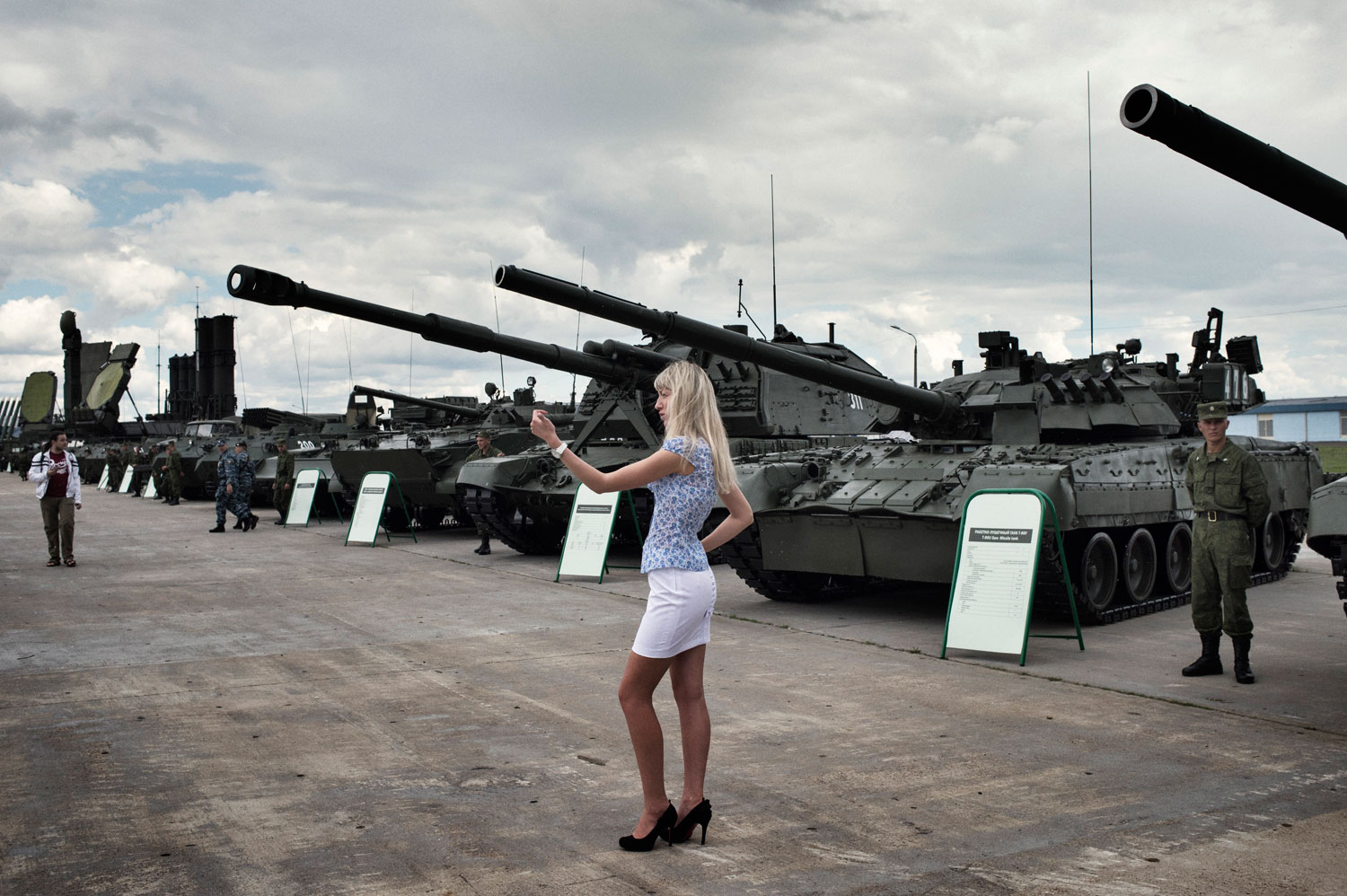
In the last week of June, at an airfield outside Moscow, Russia laid out a smorgasbord of military hardware—including everything from tanks to anti-aircraft batteries—and invited some of the most militaristic nations in the world do some pleasant summer shopping. Meat was grilled in barbecue pits, comely models stood around in mini-skirts, ’80s music and obnoxious techno pounded through the speakers, and once a day, a choreographer from the Bolshoi Theater staged a “tank ballet” of twirling war machines that was grandiloquently titled, “Unconquerable and Legendary.”
Welcome to the deceptively titled Forum for Technologies in Machine Building, the biennial Russian arms bazaar that President Vladimir Putin inaugurated in 2010. Delegations from Iran, Bahrain, Uganda, Zimbabwe, Pakistan and Saudi Arabia, among many others, attended the expo this year, and spent their time ogling cruise missiles, climbing into armored jeeps and trying out the most famous—and most deadly—Russian weapon of them all: the Kalashnikov assault rifle, which is thought to hold the stomach-turning honor of having killed more people than any other weapon in the history of man.
On the afternoon of June 28, TIME followed around the delegation to the arms bazaar from Syria, who, like many of the participants, would not legally be able to buy their weapons in the West (the TIME magazine story is available to subscribers here). For the past 16 months, Syrian forces loyal to President Bashar Assad have brutally tried to crush a homegrown rebellion, which has already cost around 15,000 lives, including thousands of women and children. The U.S. and Europe have responded by banning weapons sales to Syria, and along with their allies in the Arab world, they have pushed for an international arms embargo against Assad’s government. But Russia, the world’s second largest arms dealer after the U.S., has used its veto power in the U.N. to block these sanctions. With around $4 billion in weapons contracts to fulfill for its Syrian clients, Russia has continued supplying arms to Damascus, which gets nearly all of its weapons from Russia.
It was impossible to tell what, if anything, the Syrians came to the Moscow arms bazaar to purchase. Such deals would be signed behind closed doors, and both sides declined to comment. Colonel Isam Ibrahim As’saadi, the military attache at the Syrian embassy in Moscow, chaperoned the three officials in town from Damascus, and they would only say that they came to Moscow especially to attend the fair. The items that seemed to interest them most that day were armored military vehicles, trucks equipped with roof-mounted rocket launchers and brand new Kalashnikov assault rifles. Andrei Vishnyakov, the head of marketing for Izhmash, the company that created the AK-47, spent more than an hour selling them on the virtues of the firm’s new sniper rifles and machine guns. Before handing the head of the Syrian delegation a silencer-equipped AK-104, Vishnyakov said: “This weapon is perfect for close-quarters combat, house to house.” The Syrian official then lifted the gun’s sight to his eye and pointed it across the crowded pavilion, no doubt wondering how useful it could be back home.
Simon Shuster is TIME’s Moscow reporter.
Yuri Kozyrev is a contract photographer for TIME and was named the 2011 Photographer of the Year in the Pictures of the Year International competition.

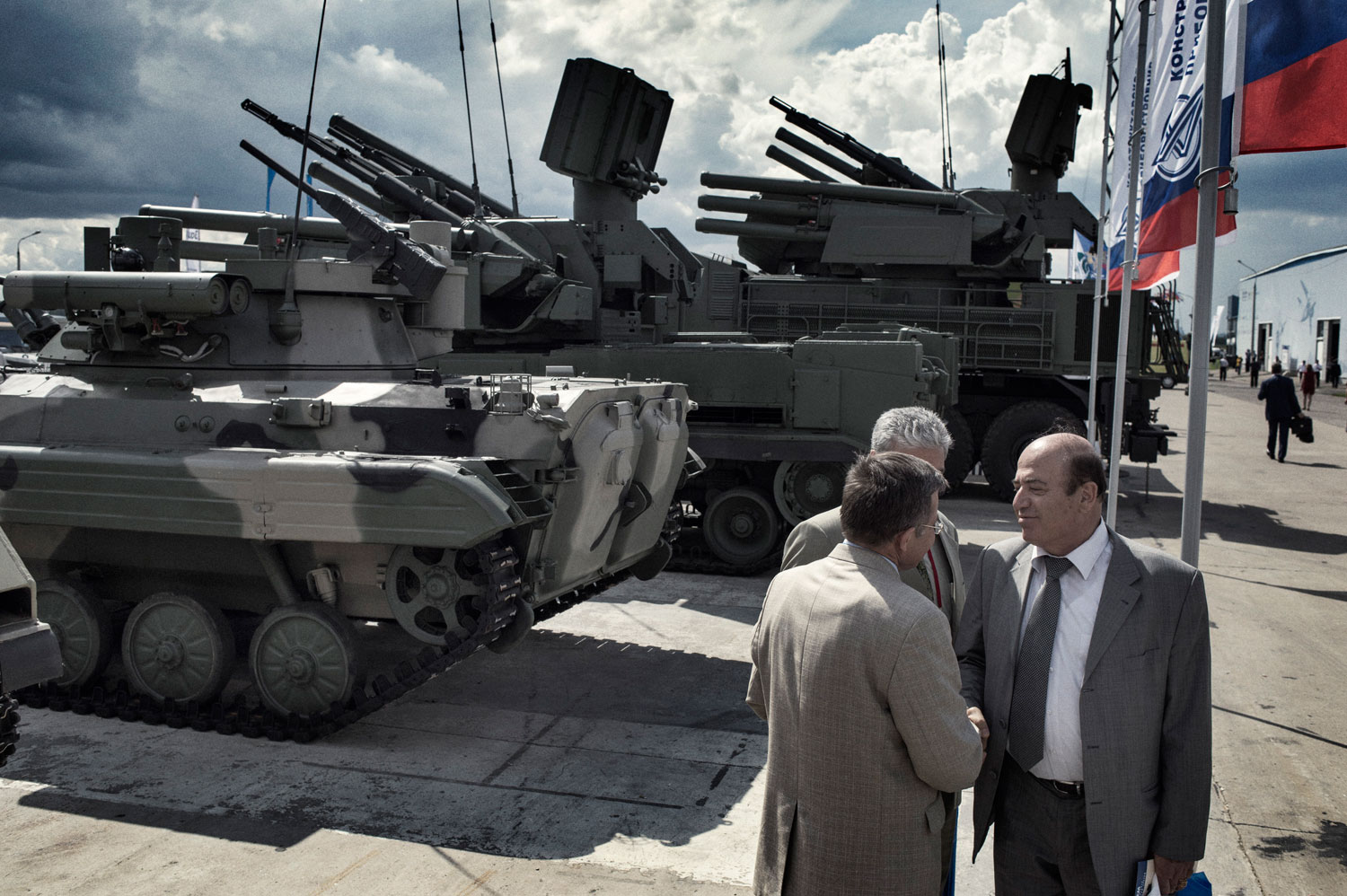
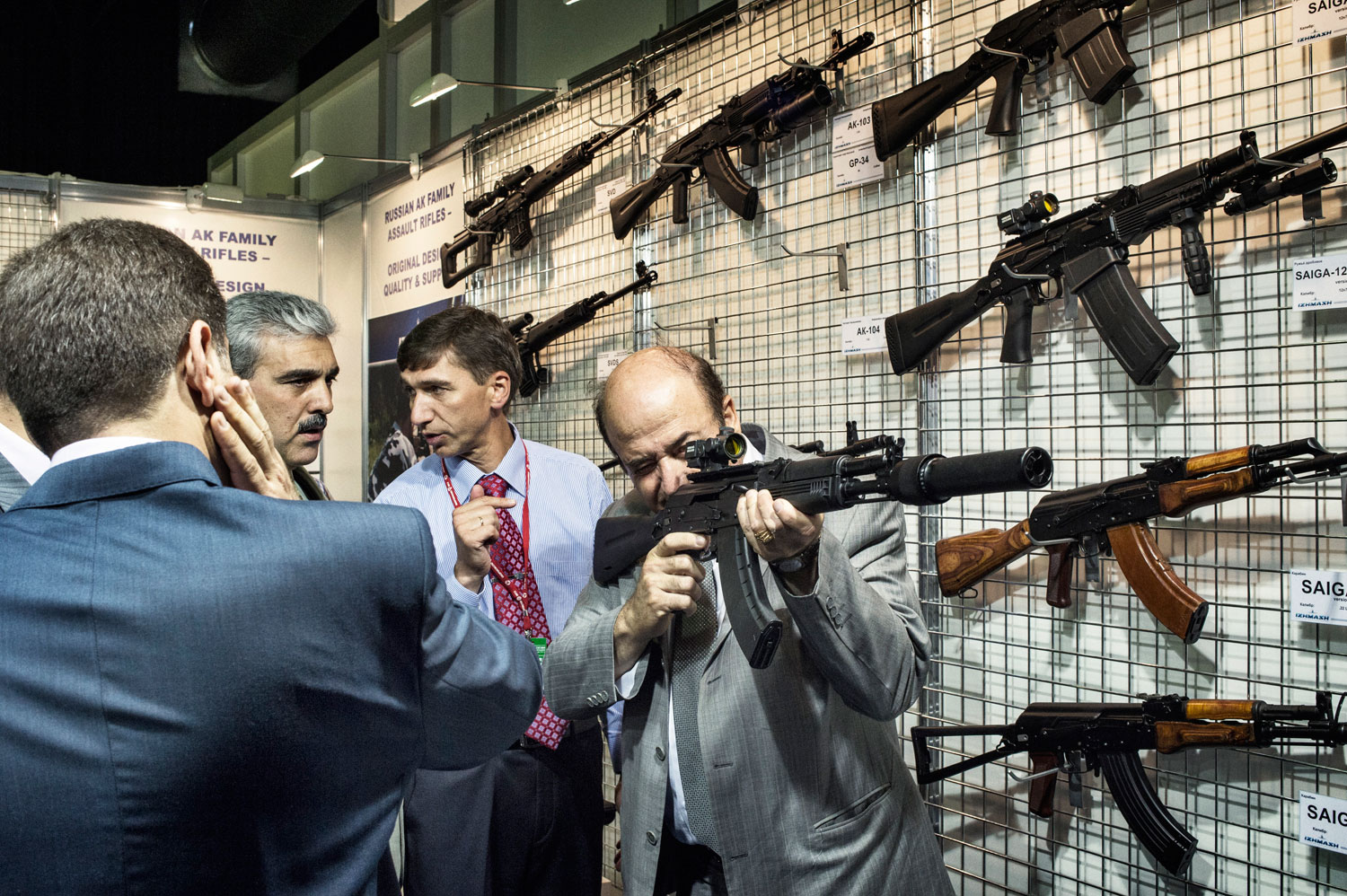





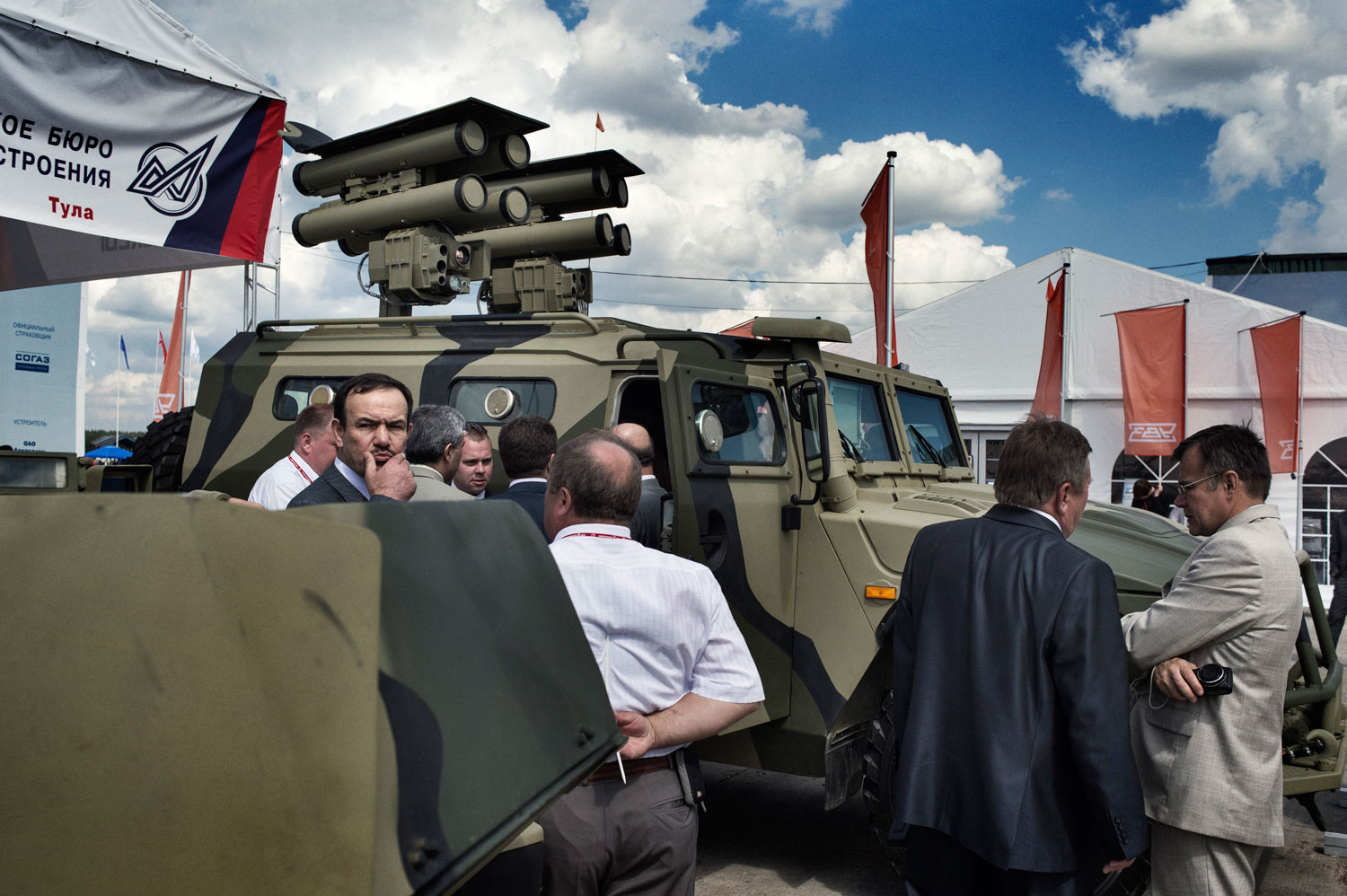
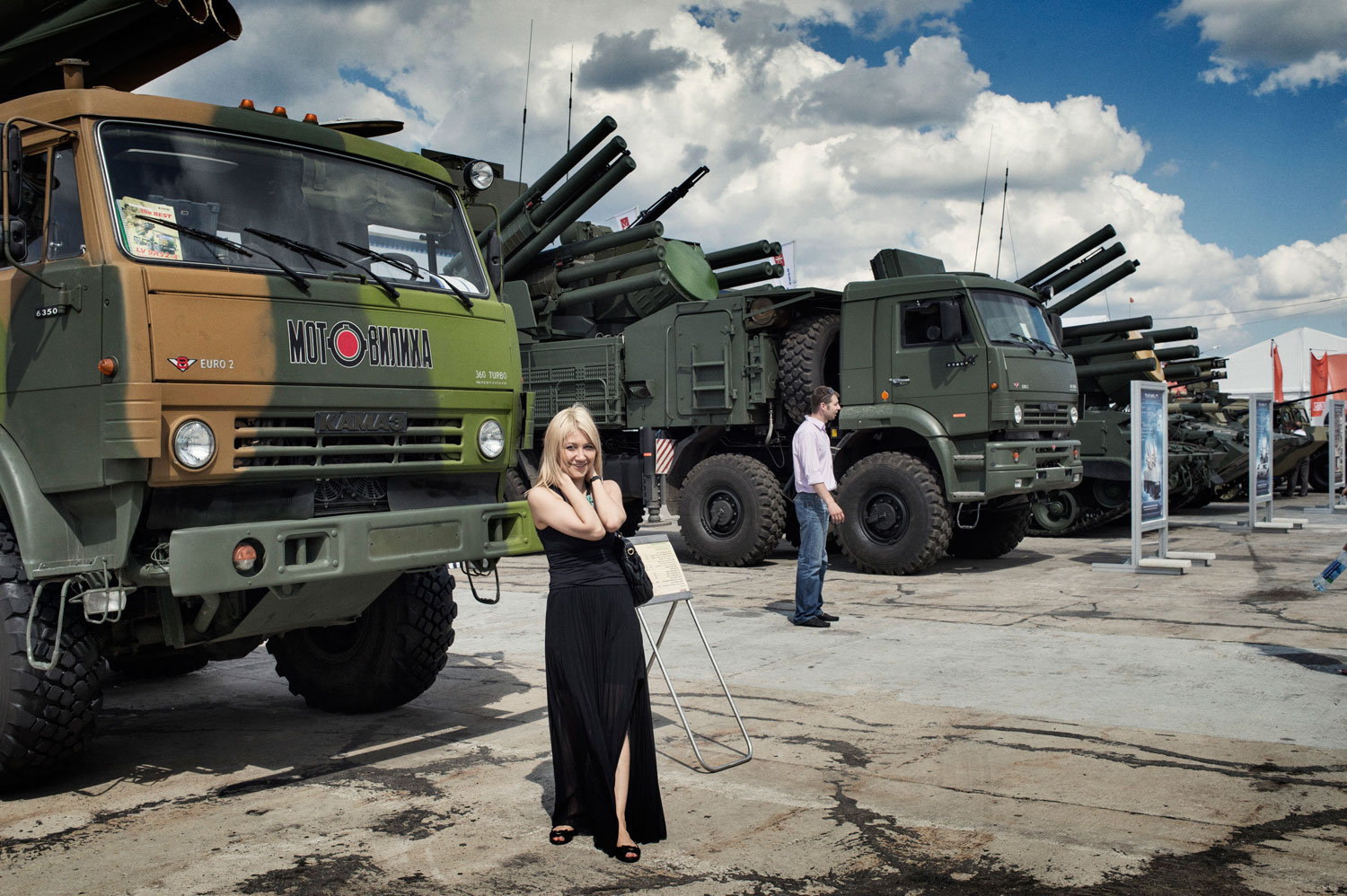
More Must-Reads from TIME
- Cybersecurity Experts Are Sounding the Alarm on DOGE
- Meet the 2025 Women of the Year
- The Harsh Truth About Disability Inclusion
- Why Do More Young Adults Have Cancer?
- Colman Domingo Leads With Radical Love
- How to Get Better at Doing Things Alone
- Michelle Zauner Stares Down the Darkness
Contact us at letters@time.com